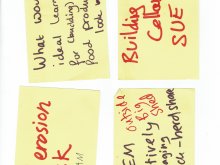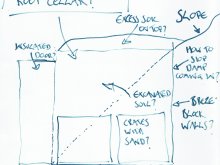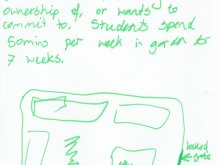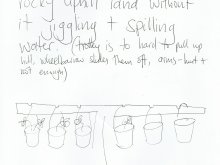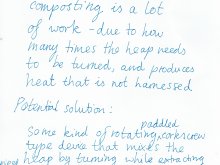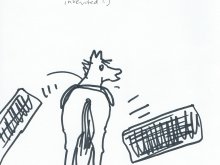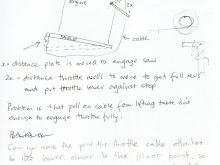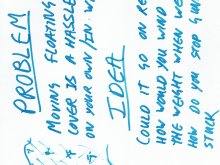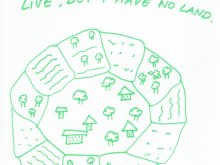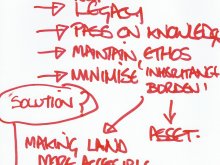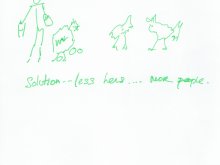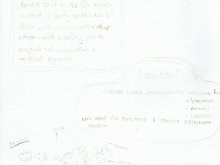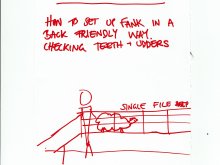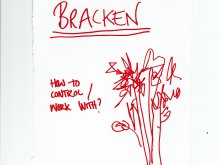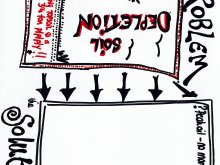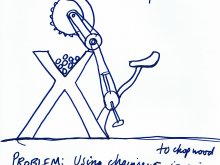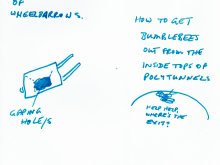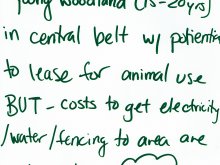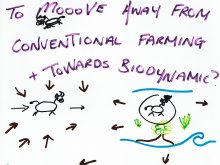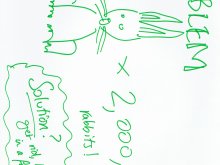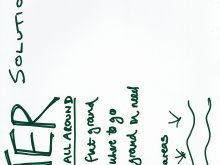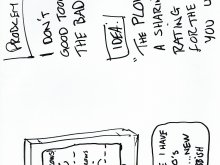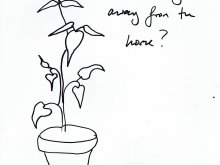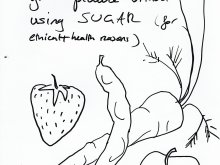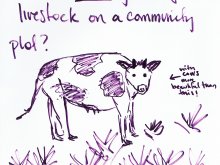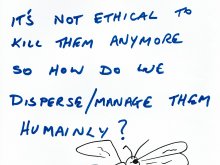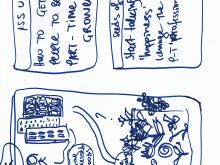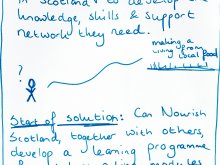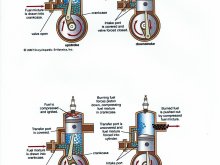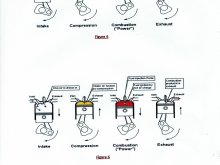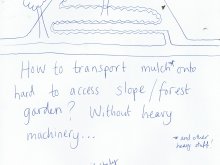Did you miss Farm Hack Scotland in October 2016, or do you want to be reminded of the great workshops that took place?
Below you can find an overview of the workshops, with contact details and links to further resources.
Scything - with Tearlach Quinnell
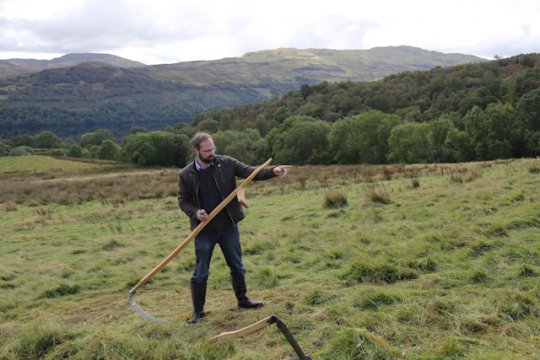
What: The workshop was an introduction to the Scandinavian scythe.
Tearlach has been scything for several years now, both to cut grass and other materials for use on his smallholding in Nairnshire, and at competition level.
More info:
Contact Tearlaich, also for ordering scythes, at tearlaich1 @ hotmail.com.
The Scythe Association: https://www.facebook.com/groups/scytheassociation/
Scything Improver’s Forum: https://www.facebook.com/groups/643393295735728/
Design solutions using digital manufacturing - with MAKlab
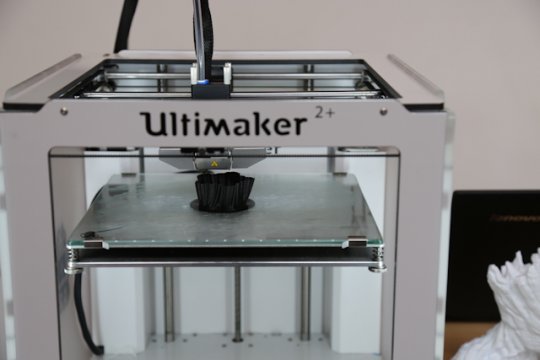
MAKlab hosted three different workshops that were at the heart of the Hack: at the first one, participants were able to bring their problems and ideas for design work and broken machine parts for fixing (See photo gallery below for all the ideas generated in the Sunday session). MAKlab scanned these with a 3D scanner to help create a new part at a later date using CNC milling or other techniques. The second workshop was an open surgery, continuing to address farm problems, develop design ideas and scan broken things. The third part offered a more in depth focus on building some working prototypes to present at the end of the weekend.
Founded in 2012, MAKlab is at its heart is a machinery co-op, an exploration of the opportunities of Distributed/Decentralised manufacture, and the open source movement. Maklab is focused on providing resources for people from all backgrounds, of all ages and all abilities to use making as a tool for social empowerment, regeneration, inclusion, economic growth and social capital.
More info:
Contact Alan Rochead at alan @maklab.co.uk.
https://www.instagram.com/themaklab/
Green woodworking - with Gavin Phillips

In this workshop, participants learned how to use a forked-tree cleaving-brake and a froe to make a rake-head from cleft wood.
Gavin is a “supplier of fun with wood & wheat (also demonstrator & teacher of woody skills)” and runs Shed Therapy.
More info:
Contact Gavin at gavin @ shedtherapy.com
Resources recommended by Gavin:
Greenwood working
- To seek probably free help local to you: www.bodgers.org.uk/index.php/local-groups
- Any book by Mike Abbott, e.g.:
o Green Woodwork: Working with Wood the Natural Way
o Living Wood: From Buying a Woodland to Making a Chair
o Going with the Grain: Making Chairs in the 21st Century
Sourdough Bread baking
- Sourdough recipe Hartley p 16 mk15.pdf
- Sourdough Made Simple by Mick Hartley
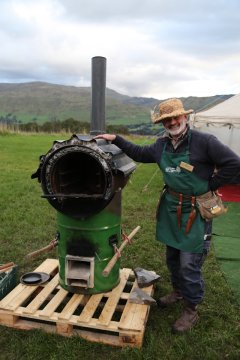
Rocket ovens:
Best place to start is this Youtube video: Aprovecho Rocket Bread Oven.
Biochar and Soil Carbon - with Adam Ormes Court
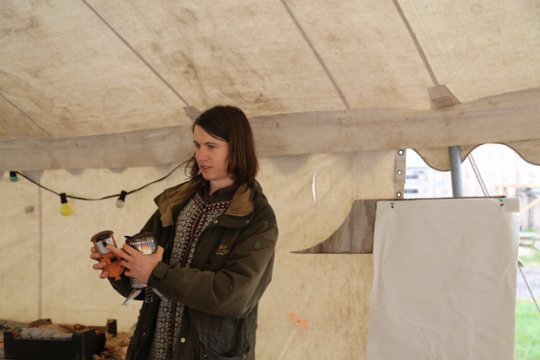
What: An overview of how to produce food in a way that increases soil carbon, with a focus on full cycle biochar systems. This 2,000 year-old practice converts agricultural waste into a soil enhancer that can hold carbon, boost food security, and increase soil biodiversity, and discourage deforestation. The process creates a fine-grained, highly porous charcoal that helps soils retain nutrients and water.
Adam has recently been researching biochar systems with a view to putting them into practice on a land project soon.
More info:
Resources recommended by Adam:
Pit burn basics: https://pacificbiochar.com/how-to-make-biochar-with-only-a-match/
More detail about various production methods: https://www.biochar-journal.org/en/ct/39
An interview with biochar pioneer Ed Revill (based on the Gower Peninsula, South Wales) - includes links to website with stove designs: http://www.needfire.info/home/interview-with-ed-revill
Instuctions for in-stove char production - a method that makes use of the gases, courtesy of John Compost Cossham:
I make a small hole in a steel tin which has a tight-fitting lid, fill with sawdust (or any other organic material - that means containing carbon) and place this in my woodstove, usually on top of a split dry log, with the hole facing into the area of combustion so the jet of gas ignites and adds to the heat of the system. When the volatiles have been driven off, the jet of flame disappears and I can take the tin out, wait for it to cool and the empty the biochar out, and refill the tin. If the lid is taken off before it cools, the charcoal DOES begin to glow red and oxidise. So this is why it's really important to let it cool right down over 10 minutes or so before emptying it and refilling. I place the tin on the hearth in front of the stove for it to cool to ambient temperatures. I might do this up to 10 times in one evening. The tin eventually burns through and I put it in the recycling, but biscuit tins are easy to come by!
If you're going to be doing this, worth being aware that carbon monoxide is a potential hazard, and it's therefore recommended to have a carbon monoxide alarm in the space you're doing it in. To be extra safe, cover the hole in the tin with a 2p piece while it's cooling so no gases can get out.
Access to Land - with the Scottish Farm Land Trust
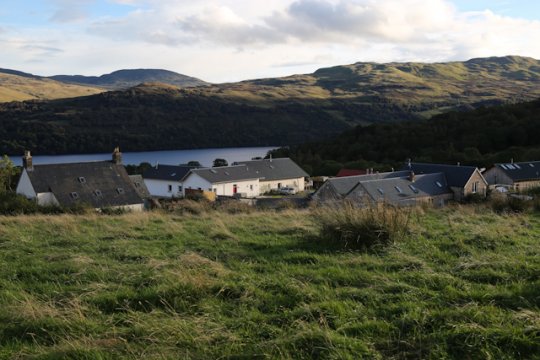
What: The workshop considered access to land for ecological agriculture in Scotland, exploring some of the background and changes to agriculture in Scotland and discussing the barriers to people seeking land. The Scottish Farm Land Trust aims to create secure and affordable opportunities for young farmers and new entrants into farming, to help them establish and sustain small ecological farms. They will achieve this by purchasing land in trust, and making long-term affordable leases available.
More info:
contact @ scottishfarmlandtrust.org OR contact Johnny at jagnew98 @ hotmail.co.uk
![]() PROPOSAL Scottish Farm Land Trust.pdf
PROPOSAL Scottish Farm Land Trust.pdf
![]() SFLT Land Reform in Scotland - Sept 2015.pdf
SFLT Land Reform in Scotland - Sept 2015.pdf
Blacksmithing - with Grass Roots Turf Roof University
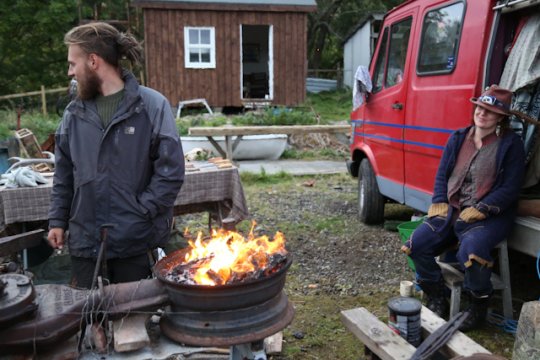
What: In this workshop participants learned how to turn unwanted farm scrap into useful new tools with a portable DIY forge.
Jimmy and Kate have just established themselves on a 2-acre croft in Aberdeenshire, with the vision of creating a university for practical land-based skills of all sorts.
More info: Grass Roots Turf Roof University
Farm engine maintainence and mechanics - with Dave Barfoot
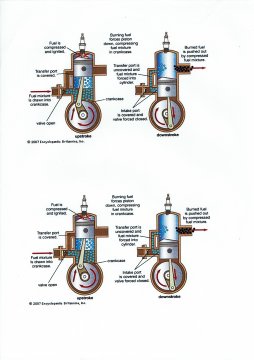
The workshop covered the basics of diesel engines and two stroke petrol engines, using Tombreck tractors and chainsaws as a reference point.
Dave Barfoot is a mechanic and farmer with training in automotive mechanics and considerable experience fixing farm machinery and farm-hacking. He currently works at East Coast Organics in East Lothian and is a Common Good Food board member.
Designing a Sustainable Smallholding - with Niels Corfield
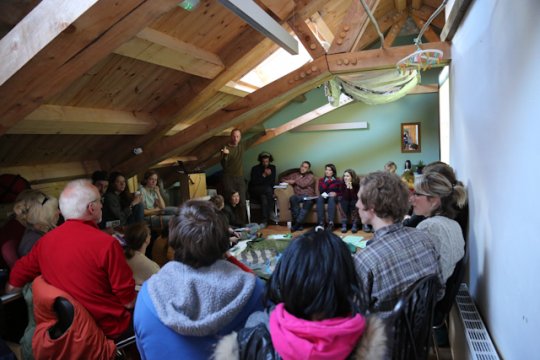
In this workshop, participants designed a sustainable smallholding, using agroecology techniques.
Niels Corfield is a designer, educator and consultant, creating sustainable / regenerative landscapes and farms in the UK and Europe. He is the director of Edible Cities.
Sausage Making - with Sue Manning and Tober Brown
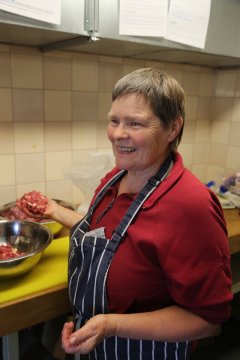
Using a KuneKune pig raised at Tombreck and slaughtered that week, participants learned how to make sausages.
Tober Brown has been a farmer, (including fish farming) crofter, forester, fencer and tree planter for more than 40 years, with the last 19 of these at Tombreck. He is especially enthusiastic about planting trees.
Sue Manning is a qualified Architect and a partner in Ecological Architecture LLP, with an office in the Cart Shed Studio at Tombreck. She also helps with the running of Tombreck Farm and Farm Shop, utilising practical skills such as gardening and butchering.
Handy fencing skills - with Tober Brown
Participants built a small section of fence using various fencing tools, and learned from Tober the skills and techniques he has developed over the years.
Horse Drawn Farming - with Ed Hamer
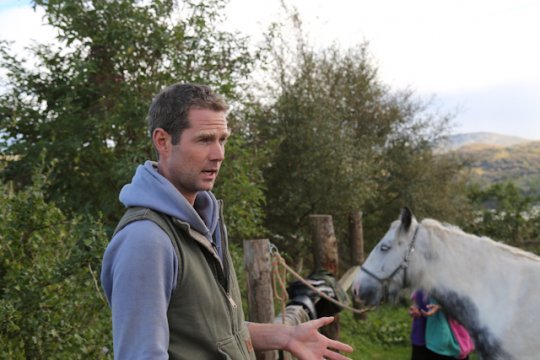
Ed Hamer farms a six acre CSA in Devon called Chagfood Community Market Garden where working horses have traditionally been used for cultivation & tillage.
Photographs by Clementine Sandison





